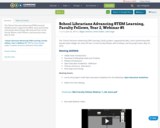
The "School Librarians Advancing STEM Learning" (SLASL) project, supported by IMLS, and in partnership with Granite State College, NH, kicks off Year 2 of the Faculty Fellows, with 8 Fellows, and the project team, May 18, 2016.

The "School Librarians Advancing STEM Learning" (SLASL) project, supported by IMLS, and in partnership with Granite State College, NH, kicks off Year 2 of the Faculty Fellows, with 8 Fellows, and the project team, May 18, 2016.
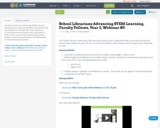
The "School Librarians Advancing STEM Learning" (SLASL) project, supported by IMLS, and in partnership with Granite State College, NH, meets with Year 2 Faculty Fellows and the project team, September 21, 2016, to focus on new draft modules and providing feedback toward final publishing of the OER modules for school librarian education.
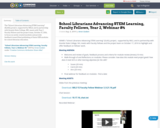
The "School Librarians Advancing STEM Learning" (SLASL) project, supported by IMLS, and in partnership with Granite State College, NH, meets with Year 2 Faculty Fellows and the project team, October 17, 2016, to focus on newly created modules and provide feedback toward final publishing of these OER modules for school librarian education.
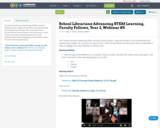
The "School Librarians Advancing STEM Learning" (SLASL) project, supported by IMLS, and in partnership with Granite State College, NH, meets with Year 2 Faculty Fellows and the project team, November 3, 2016, to focus on newly created modules and provide feedback toward final publishing of these OER modules for school librarian education.
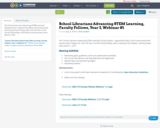
The "School Librarians Advancing STEM Learning" (SLASL) project, supported by IMLS, and in partnership with Granite State College, NH, kicks off Year 3 of the Faculty Fellowships, with Fellows and the project team, March 1, 2017.

The "School Librarians Advancing STEM Learning" (SLASL) project meeting with North Carolina school librarians and STEM teacher fellows, Feb 15, 2017, to focus on STEM inquiry and literacy standards and other issues.
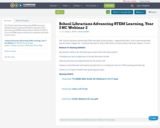
The "School Librarians Advancing STEM Learning" (SLASL) project meeting with North Carolina school librarians and STEM teacher fellows, March 15, 2017, to focus on STEM inquiry and literacy standards and other project issues.
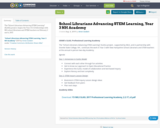
The "School Librarians Advancing STEM Learning" (SLASL) project, begins the Year 3 K-12 fellowships with NH school librarians and STEM teachers on February 2 and 4, 2017.
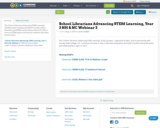
The "School Librarians Advancing STEM Learning" (SLASL) project meeting with North Carolina school librarians and STEM teacher fellows, March 15, 2017, to focus on STEM inquiry and literacy standards and other project issues.
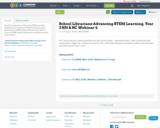
The "School Librarians Advancing STEM Learning" (SLASL) project meeting with North Carolina school librarians and STEM teacher fellows, June 7, 2017, to focus on STEM inquiry and literacy standards and other project issues.
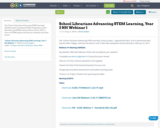
The "School Librarians Advancing STEM Learning" (SLASL) project meeting with New Hampshire school librarians and STEM teacher fellows, Feb 22, 2017, to focus on STEM inquiry and literacy standards and other issues.
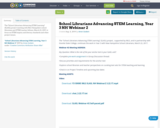
The "School Librarians Advancing STEM Learning" (SLASL) project meeting with New Hampshire school librarians and STEM teacher fellows, March 22, 2017, to focus on STEM inquiry and literacy standards and other project issues.
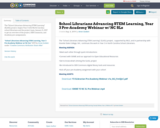
The "School Librarians Advancing STEM Learning" (SLASL) project, begins Year 3 with North Carolina school librarians and the project team, January 11, 2017 to get an overview of the project, OER Commons, and Academy pre-assignments.
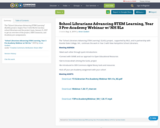
The "School Librarians Advancing STEM Learning" (SLASL) project, begins Year 3 with North Carolina school librarians and the project team, January 11, 2017 to get an overview of the project, OER Commons, and Academy pre-assignments.

Openly published book
Title: Self-directed multimodal learning in higher education
Editor: Jako Olivier
Publisher: AOSIS, Cape Town, South Africa
ISBN: 978-1-928523-42-0
DOI: https://doi.org/10.4102/aosis.2020.BK210
Date of publication: 2020
This book aims to provide an overview of theoretical and practical considerations in terms of self-directed multimodal learning within the university context. Multimodal learning is approached in terms of the levels of multimodality and specifically blended learning and the mixing of modes of delivery (contact and distance education). As such, this publication will provide a unique snapshot of multimodal practices within higher education through a self-directed learning epistemological lens. The book covers issues such as what self-directed multimodal learning entails, mapping of specific publications regarding blended learning, blended learning in mathematics, geography, natural science and computer literacy, comparative experiences in distance education as well as situated and culturally appropriate learning in multimodal contexts.
This book provides a unique focus on multimodality in terms of learning and delivery within the context of self-directed learning. Therefore, the publication would not only advance the scholarship of blended and open distance learning in South Africa, but also the contribute to enriching the discourse regarding self-direction. From this book readers will get an impression of the latest trends in literature in terms of multimodal self-directed learning in South Africa as well as unique empirical work being done in this regard.
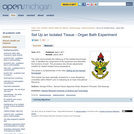
The video demonstrates the setting up of the isolated tissue/organ bath. It identifies the components of the equipment and describes the functions of each. This procedure also shows adjustments, suitable for related isolated tissue preparations.This series is complementary to the video Setting Up the Harvard Kymograph.This module has been internally reviewed by a cross-disciplinary committee within KNUST prior to releasing as an Open Educational Resource.

The Harvard Kymograph with stimulator is a piece of equipment that enables the recording of contractions of muscles from isolated issue preparations. In order to obtain the best results, suitable adjustment for the preparations should be made. This video demonstrates all possible adjustments that can be made for the best results. The apparatus also enables the worker to treat an isolated tissue preparation with drugs and to record some form of biological activity.This module has been internally reviewed by a cross-disciplinary committee within KNUST prior to releasing as an Open Educational Resource.
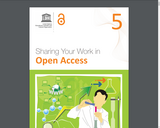
This is the last Module of the course on Open Access for researchers. So far you have studied about Open Access, its history, advantages, initiatives, copyrights and licensing, evaluation matrix for research – all in the context of scholarly communication. In this Module with just two units, we would like to help you share your work in Open Access though repositories and journals. At the end of this module, you are expected to be able to:
- Understand the publication process involved in dissemination of scholarly works;
- Choose appropriate Open Access journals and repositories for sharing research results;
- Use social media to promote personal research work and build reputation.
In Unit 1, we discuss the research publication process at five stages – planning stage, preparing stage, pre-publication stage, publication stage and postpublication stage. We emphasize the importance of social media in sharing and making your work visible to the target groups.
In Unit 2, we focus on sharing your research through OA repositories and Journals. First we discussed the different types of repositories to select and highlighted the steps that you may consider including deposit in your own institutional repositories or in global open repositories. We then discuss the sources of finding and deciding on OA journals. This unit also provides guidance on choosing the right OA journals, as the quality of OA journals is often questioned.
This is Module Five of the UNESCO's Open Access Curriculum for Researchers.
Full-Text is available at http://unesdoc.unesco.org/images/0023/002322/232211E.pdf

About Stats of DOOM
Support Statistics of DOOM! This page and the YouTube channel to help people learn statistics by including step-by-step instructions for SPSS, R, Excel, and other programs. Demonstrations are provided including power, data screening, analysis, write up tips, effect sizes, and graphs. Help guides and course materials are also provided!
When I originally started posting my videos on YouTube, I never really thought people would be interested in them - minus a few overachieving students. I am glad that I've been able to help so many folks! I have taught many statistics courses - you can view full classes by using the Learn tab in the top right. I have also taught cognitive and language courses, some with coding (see the NLP and Language Modeling courses), and some without (see Other Courses). I hope this website provides structure to all my materials for you to use for yourself or your classroom.
Each page has an example syllabus, video lectures laid out with that syllabus (if I have them!), and links to the appropriate materials. Any broken links can be reported by sending me an email (linked at the bottom). Stats Tools was designed for learning statistics, which morphed into learning coding, open science, statistics, and more! Recommendations, comments, and other questions are welcome with the general suggestion to post on the specific video or page you have a question on. I do my best to answer, but also work a full-time job.
These resources wouldn't be possible without the help of many fantastic people over the years including:
All the Help Desk TAs: Rachel E. Monroe, Marshall Beauchamp, Louis Oberdiear, Simone Donaldson, Kim Koch, Jessica Willis, Samantha Hunter, Flora Forbes, Tabatha Hopke
Research colleagues: K.D. Valentine, John E. Scofield, Jeff Pavlacic
And more! Pages with specific content made by others are noted on that page.
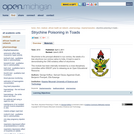
Strychnine is the principal alkaloid in nux vomica, the seeds of a tree strychnos nux vomica native to India. A toad is used in demonstrating the CNS ecitatory effect of strychnine.This module has been internally reviewed by a cross-disciplinary committee within KNUST prior to releasing as an Open Educational Resource.